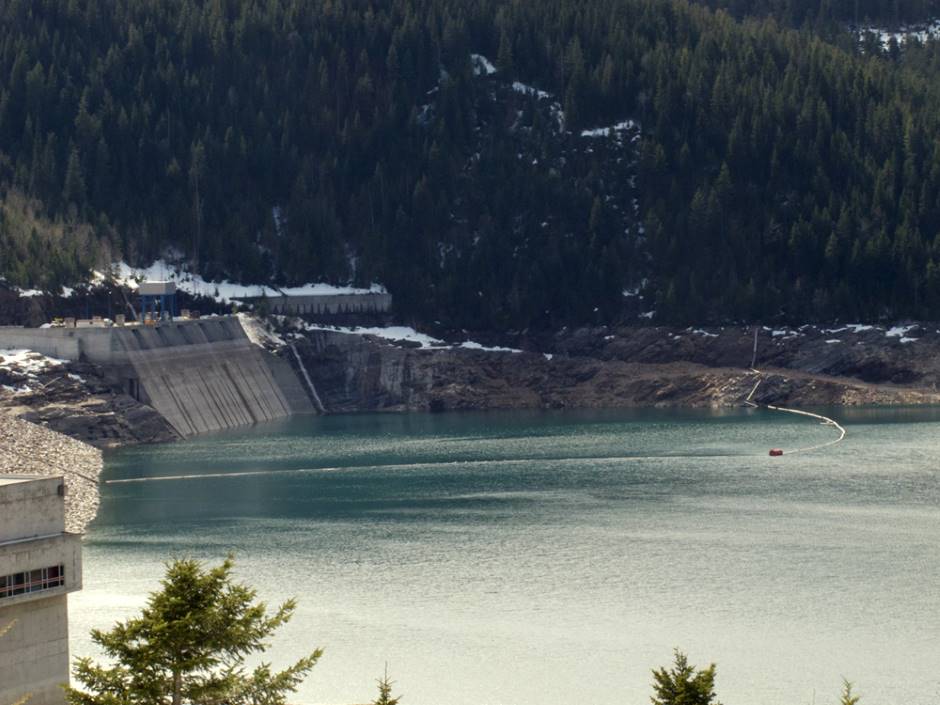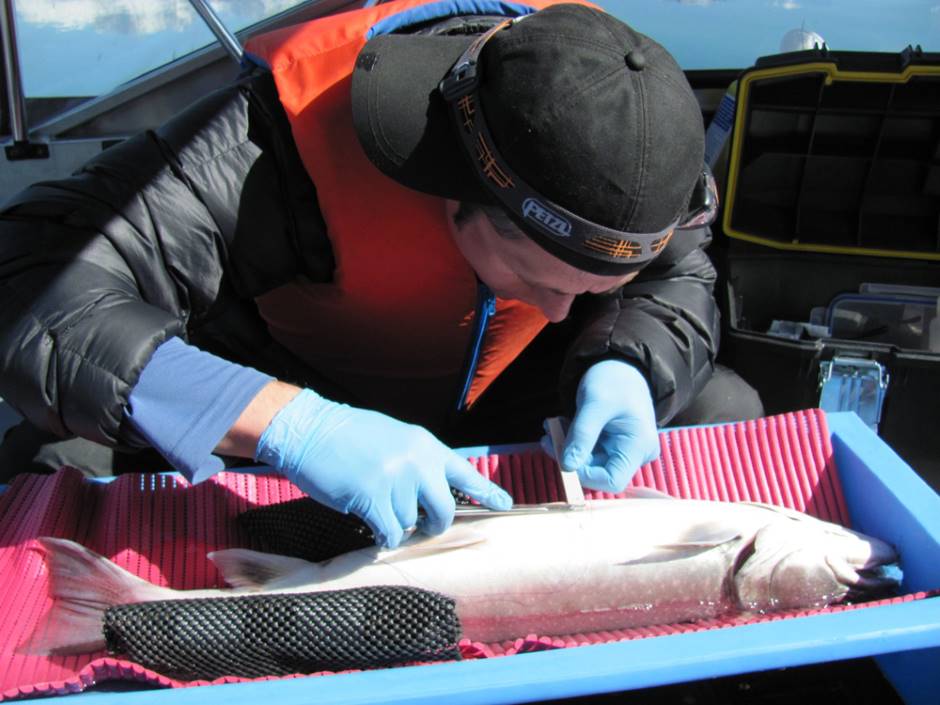Entrainment study tracks bull trout to keep fish out of Canadian dam’s turbines
Hydropower is a big deal: Hydroelectric dams generate about 16 percent of the world’s power, a figure that’s expected to rise by 3 percent annually for the next 25 years. Plus, this energy source is cheap and renewable, making it a good investment for humans and the environment.
Of course, a blessing for some may spell damnation for others, and the damned in this story are the dammed-in fish that get caught in spinning turbines beneath hydroelectric generators. Dam puns aside, fish entrainment is one of the nastier repercussions of hydropower. Most fish that find their way into a turbine intake don’t make it out alive, and those that do are often left disfigured and unable to properly forage and avoid predators — a death sentence in its own right.
Fisheries in hydropower reservoirs can suffer significant losses from entrainment alone, and hydropower operators employ various strategies to try and keep the fish away from turbine intakes. In hopes of informing these strategies, researchers from several Canadian universities banded together to study adult bull trout behavior at Kinbasket Reservoir in British Columbia. Their findings were published online in Animal Biotelemetry.
“When he got the fish closer to the boat, we noticed that his ‘little’ fish was in the mouth of an estimated 10-pound bull trout.”
– Lee Gutowsky
“I was excited about the challenge to use high technology to track movements of bull trout near a hydropower facility, and learn how their behavior is associated with increased entrainment risk,” said Eduardo Martins, lead author of the paper and post-doctoral fellow at Carleton University in Ottawa.
The researchers relied on fine-scale acoustic telemetry — an underwater network of acoustic receivers and fish carrying electronic tags — to observe fish en masse and from the comfort of dry land. The electronic tags attached to the bull trout “pinged” every so often to provide locational data, and also featured sensors that read body temperature and the fish’s depth.
But the system wasn’t perfect by itself. Fish positions obtained with acoustic telemetry are seldom accurate, Martins said. The researchers had to construct statistical models that allowed them to better determine a trout’s proximity to the generator housing located above the turbines. It proved to be quite the challenge, and the final model run took about 15 days to finish.
The tagging process, on the other hand, felt a little more like a fishing trip than a course in statistics. Lee Gutowsky, a doctoral student at Carleton University, led the tagging work and explained what an average day was like:
“We’d wake up at 6:00 a.m., grab breakfast, take a bagged lunch and hit the water,” Gutowsky said. “We trolled all day, usually catching a couple of fish before noon. On a good day we’d catch 10 fish between 8:00 a.m. till about 4:30 p.m.”
This went on from early April into May. Tagging continued in autumn with the aid of silver spoons — effective lures in spawning tributaries — and some old-fashioned, back-country camping. Although autumn angling wasn’t as fruitful as spring for the researchers, they still managed to snag about 6 fish on each of the “good days,” and even took home some remarkable tales.
“We had an eagle swoop down and grab one of our freshly released tagged fish,” Gutowsky said. “We used binoculars and watched the eagle eat. When it finally flew off, we walked up the shoreline to see whether our transmitter was spared. In the midst of a pile of fish bones was our transmitter. It was unharmed and needless to say, we used it to tag another fish.”
“On another occasion, our guide, Jaime Tippe, was bringing in a nice 3-pound bull trout when suddenly he noticed the fish had seemed to turn into a heavy log,” Gutowsky said. “When he got the fish closer to the boat, we noticed that his ‘little’ fish was in the mouth of an estimated 10-pound bull trout.”

View of the Mica Dam powerhouse. The bull trout were tracked within the area surrounded by the log boom. (Credit: Eduardo Martins)
After studying the fish, monitoring their movements and plugging the data into state-space models, the researchers determined that bull trout are more likely to approach turbine intakes during the fall, and even more so in the winter. As they near the intakes, they move slowly and frequently change direction — an indicator of foraging. This behavior, the researchers hypothesized, is a product of foraging for kokanee, which seem to congregate near dams in the winter.
Martins hopes the study’s results will help dam operators protect valuable members of reservoir fisheries.
“Our study is likely to inform hydropower operators on the best times to operate devices (such as strobe lights) to scare bull trout away from the vicinity of the intakes,” Martins said. “Such devices may not only reduce bull trout entrainment, but also entrainment of other species.”




0 comments